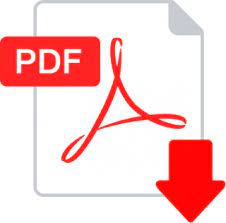Perancangan Aplikasi Kamus Kosakata Bahasa Jepang Bidang Manufaktur
DOI:
https://doi.org/10.34010/js.v11i2.7005Abstract
Abstract
Japanese vocabulary skills, especially in manufacturing, can be developed by using a dictionary application for learning. This study aims to design and create an application for a Japanese vocabulary dictionary in manufacturing, particularly in the fields of production, quality control, engineering and maintenance. The research model used in this research is ADDIE (Analysis, Design, Development, Implementation, Evaluation) model. The result of the study is an Android-based manufacturing Japanese vocabulary dictionary application using the main software Unity Engine and Figma as supporting software. The overall design process refers to the fulfilment of the application function as one of the alternative learning media with attention function, affective function, cognitive function, and compensatory function.
Keywords: Application, design, dictionary, manufacturing
Abstrak
Kemampuan kosakata bahasa Jepang khususnya dalam bidang manufaktur dapat dikembangkan dengan memanfaatkan aplikasi kamus untuk pembelajarannya. Penelitian ini bertujuan untuk merancang dan membuat aplikasi kamus kosakata bahasa Jepang bidang manufaktur, khususnya bidang production, quality control, engineering dan maintenance. Model penelitian yang digunakan dalam penelitian ini adalah ADDIE (Analysis, Design, Development, Implementation, Evaluation). Hasil penelitian berupa aplikasi kamus kosakata bahasa Jepang bidang manufaktur berbasis android dengan menggunakan software utama Unity Engine dan Figma sebagai software pendukung. Proses perancangan secara keseluruhan mengacu pada pemenuhan fungsi aplikasi sebagai salah satu media alternatif pembelajaran yaitu fungsi atensi, fungsi afektif, fungsi kognitif, dan fungsi kompensatoris.
Kata Kunci: Aplikasi, kamus, manufaktur, perancangan
Downloads
Published
Issue
Section
License
- Authors retain copyright and grant the journal right of first publication with the work simultaneously licensed under a Creative Commons Attribution License that allows others to share the work with an acknowledgement of the work's authorship and initial publication in this journal.
- Authors are able to enter into separate, additional contractual arrangements for the non-exclusive distribution of the journal's published version of the work (e.g., post it to an institutional repository or publish it in a book), with an acknowledgement of its initial publication in this journal.
- Authors are permitted and encouraged to post their work online (e.g., in institutional repositories or on their website) prior to and during the submission process, as it can lead to productive exchanges, as well as earlier and greater citation of published work (See The Effect of Open Access)










.jpg)

